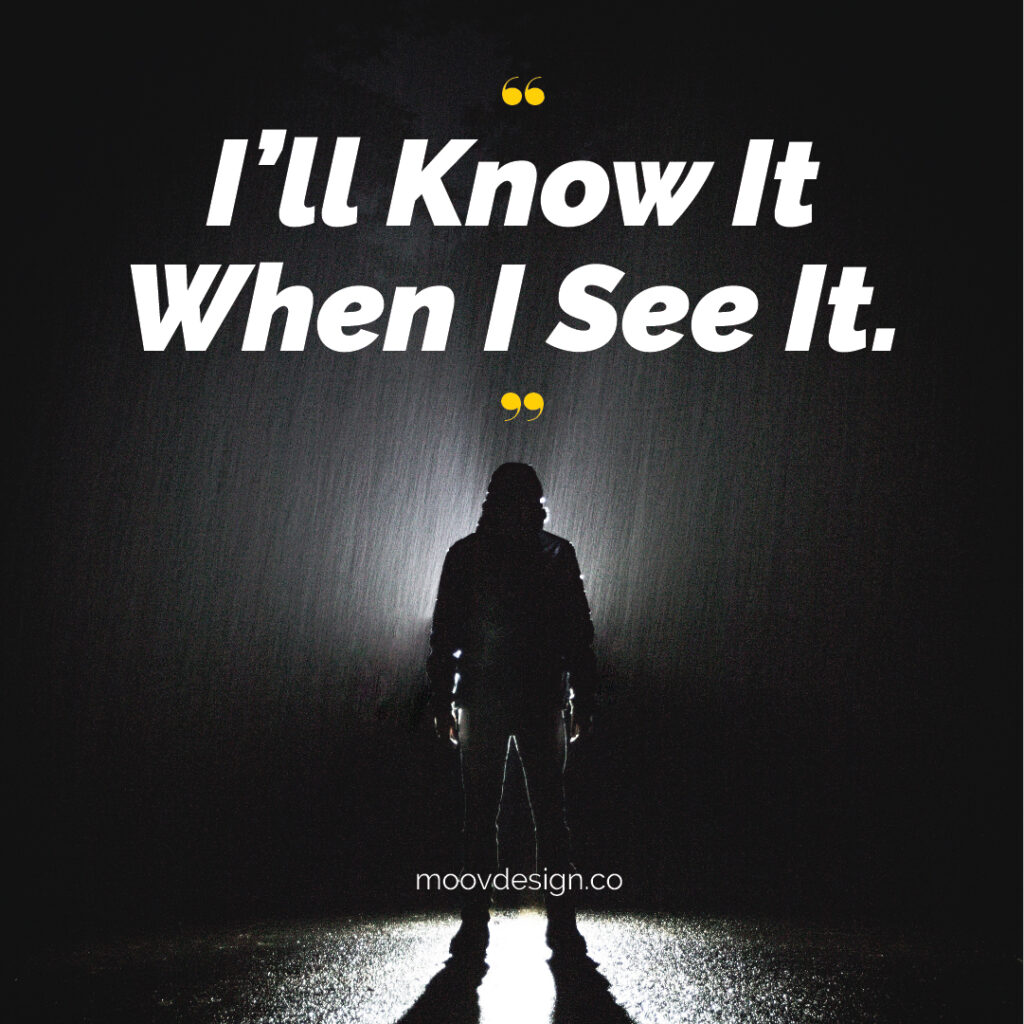
It catches you off guard. Leaping out of the darkness like a stalker. You’ve invested time, energy, and probably a bit of yourself into the project. If you’re seasoned enough, you may have even insisted on some sort of direction from the beginning. You might have even asked questions about the client’s needs and desires for the project (shocking, I know). You present the initial draft. Then the designer’s worst nightmare is stabbed: “I don’t like it. Let’s try something else. I’ll know it when I see it.“ *Full disclosure: I hate those words.
How many times have I heard them? Too many. It might be the most cringe-worthy phrase ever uttered to a designer… right next to “Can you make it pop?” or “It just needs to be more edgy.”
Why it sucks:
To me, “I’ll know it when I see it” is in a different league than any other vague client request. Most of the time you can figure out the jibba-jabba. “Edgy” could mean more angular, or trendy, dark or risky. “Make it pop” could mean more contrast, or larger, or brighter coloring. In those cases you can guide the conversation. But “I’ll know it when I see it” is a special kind of frustration. It screams: “My opinion and time are more valuable than yours. Just keep wasting your time guessing, and I’ll let you know when I like something.” <designer smashes head through wall>
*Disclaimer: I have design baggage. So let’s think about this objectively. If you decided to dive into a project without direction, that’s on you. At best, you’re designing with a style guide or referencing some of their current assets and work. You might get lucky and deliver a proof that is met with indifference. At worst, you’re completely in the dark trying to read someone’s mind, and your effort is flat out rejected.
If you managed to get some direction before you started working, chances are this type of client didn’t really know what they wanted and felt pressured into to giving you answers. Any answers. You’re left frustrated because the direction was worthless.
4 Tips to Dealing With It:
- Value your time. This is easy. Don’t invest substantial effort building art without a clearly defined and documented direction from the client. Documentation is key, even if it’s just an email. This gives you complete justification to charging for your addition effort. At least you know that your time is being valued monetarily.
- Help them discover what they want. This can be tricky especially for inexperienced creators who don’t know what to ask. The best thing you can do is research the client and know their history and mission. Talk with them about their competitors and how they are different. Discuss styles that you like… this can get the ball rolling on them sharing what they like.
- Encourage their opinions. You are a professional, but that doesn’t mean your opinion is always right. Clients know their business better than anyone, including you. Encourage their thoughts even if you don’t agree. Your opportunity to guide them is in your design. Show them their idea through your eyes. Simply put: You don’t define their mission. They do. They aren’t the artist. You are.
- Give them grace. Sometimes you’re just going to have a difficult client who doesn’t know what they want. Sometimes they won’t ever be satisfied. That doesn’t mean you have to be a push-over. It just might not be a good match for you to work together. Recommend another designer and take your lumps. It will happen. Learn from it move forward.